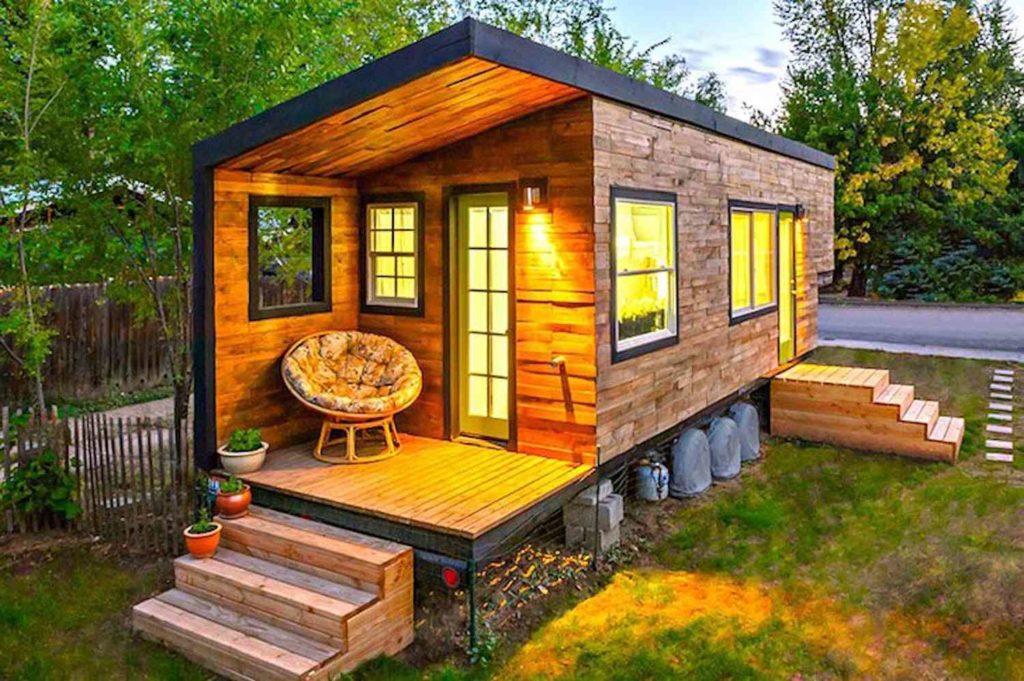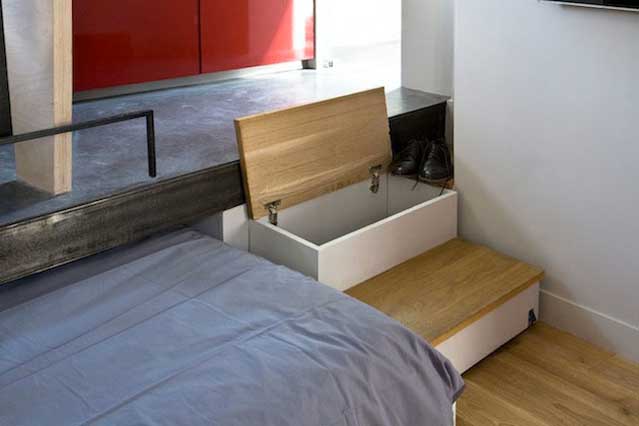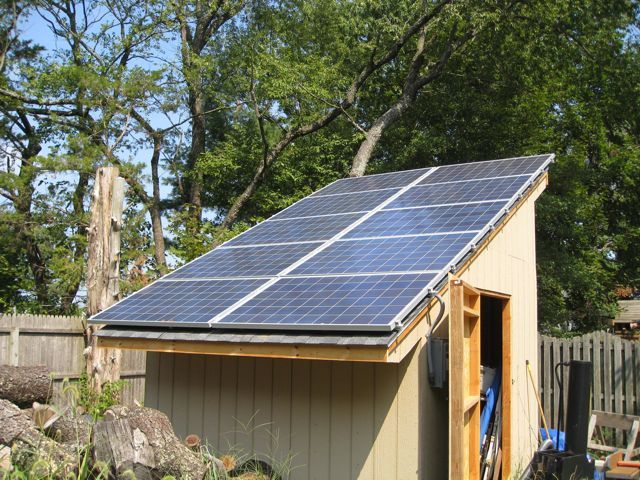Building a tiny home not only saves you money but also helps reduce your carbon footprint.
With the right knowledge and techniques, you can create a cozy and comfortable space that minimizes energy consumption and maximizes sustainability.
From selecting the perfect location to incorporating eco-friendly materials and appliances, there are many secrets to building a highly energy efficient tiny home that can help you achieve your desired level of comfort and minimize your environmental impact.
Optimize Your Building Site
Choose a building site that maximizes natural light and passive solar heating and cooling. Consider the orientation of your home, the size and location of windows, and the amount of shading from trees and other structures.
One key aspect to consider is the orientation of your home, as it can greatly impact the amount of natural light and passive solar heating and cooling you receive.
By orienting your home to the south, you can take advantage of natural light and heat from the sun, reducing the need for artificial lighting and heating sources.
Consider the size and location of windows to maximize natural light and ventilation, while minimizing heat gain in the summer and heat loss in the winter.
Be mindful of the amount of shading from trees and other structures, as too much shading can limit the amount of natural light and heat your home receives.
By carefully evaluating and optimizing your building site, you can create a comfortable, energy-efficient home that minimizes the need for artificial lighting and heating sources.
Insulate and Air Seal
Proper insulation and air sealing are important for keeping your tiny home warm in the winter and cool in the summer. Use high-performance insulation materials like spray foam or rigid foam, and seal all gaps and cracks with caulk or weatherstripping.
To keep your tiny home comfortable and energy-efficient, proper insulation and air sealing are important.
Start by using high-performance insulation materials like spray foam or rigid foam to fill the walls, floor, and ceiling.
Spray foam is a popular choice for its durability and ability to fill tight spaces, while rigid foam provides an added layer of insulation.
Next, seal all gaps and cracks with caulk or weatherstripping to prevent heat loss and air leakage.
This includes sealing around windows, doors, electrical outlets, and switches.
A thorough air seal will not only keep your tiny home warm in the winter and cool in the summer but also reduce your energy bills and minimize your carbon footprint.
You can consider using energy-efficient windows and appliances, as well as implementing passive solar design, to further optimize your tiny home’s energy performance.
By prioritizing insulation and air sealing, you’ll be well on your way to creating a cozy and sustainable living space.
Use Energy-Efficient Windows
Install energy-efficient windows with a low-E coating to reduce heat loss in winter and heat gain in summer. Consider triple-pane windows for added energy savings.
Upgrading your windows to energy-efficient models can have a significant impact on your home’s energy consumption and overall comfort.
Energy-efficient windows are designed with low-E coatings that minimize heat loss in winter and heat gain in summer, reducing the need for heating and cooling.
These coatings work by reflecting radiant heat back into the room, rather than allowing it to escape through the windows.
Consider installing triple-pane windows for added energy savings.
These windows feature three panes of glass, with two air gaps that provide superior insulation against heat and cold.
By reducing the amount of heat that escapes through your windows, you can save money on your energy bills and enjoy a more comfortable living space.
Employ Passive Solar Design
Design your tiny home to take advantage of passive solar heating and cooling. This can include using large south-facing windows for winter sunlight and overhangs or awnings to block summer sunlight.
Employing passive solar design in your tiny home can significantly reduce the need for mechanical heating and cooling systems, while also creating a more comfortable living space.
By strategically placing large south-facing windows, you can take advantage of winter sunlight and natural heat from the sun.
This can help warm your home during the colder months, reducing the need for electric heating systems.
Overhangs or awnings can be incorporated into the design to block direct sunlight during the warmer summer months, reducing the amount of heat that enters your home.
This not only saves energy but also helps to maintain a more consistent temperature throughout the year, creating a comfortable living space without the need for expensive HVAC systems.
By incorporating passive solar design into your tiny home, you can enjoy a cozy and comfortable living space while also reducing your carbon footprint and energy costs.
Select Energy-Efficient Appliances
Choose appliances with high Energy Star ratings to minimize energy consumption. Consider compact appliances that use less energy and take up less space.
When it comes to reducing energy consumption and minimizing your carbon footprint, choosing the right appliances can make a big difference.
Look for appliances with high Energy Star ratings, which indicate that they meet strict energy efficiency guidelines set by the U.S.
Environmental Protection Agency.
These appliances use advanced technology to reduce energy consumption while maintaining their performance.
For example, energy-efficient refrigerators use better insulation and more efficient compressors to keep your food cold while using less energy.
Similarly, energy-efficient washing machines use less water and detergent to clean your clothes, while high-efficiency dryers use sensors to detect the moisture level of your clothes and adjust the heat and time accordingly.
In addition to looking for Energy Star ratings, consider compact appliances that use less energy and take up less space.
These appliances are often designed to be more efficient and are a great option for smaller households or for those who want to downsize their energy usage.
For example, a compact refrigerator may be more energy efficient than a full-sized model, and a compact washing machine may use less water and energy than a traditional machine.
By choosing energy-efficient appliances and compact appliances, you can save money on your energy bills while doing your part to reduce your carbon footprint.
Incorporate Renewable Energy
Consider incorporating renewable energy sources like solar or wind power to reduce your reliance on the grid. Install solar panels or a small wind turbine to generate electricity and reduce your carbon footprint.
Incorporating renewable energy sources into your homestead can be a great way to reduce your reliance on the grid and lower your carbon footprint.
Solar and wind power are two of the most popular renewable energy sources that can be used to generate electricity.
Solar panels can be installed on your home or in a sunny location on your property, and can provide a significant amount of electricity, especially during the peak sun hours of the day.
Wind turbines can be installed in a windy location on your property, and can generate electricity from the wind.
Both solar and wind power require very little maintenance and can last for many years, making them a great investment for your homestead.
By incorporating renewable energy sources, you can significantly reduce your reliance on the grid, lower your energy bills, and help fight climate change.
Use a Heat Recovery Ventilator
Install a heat recovery ventilator (HRV) to recover heat from exhaust air and use it to warm incoming fresh air. This can help reduce your heating and cooling costs.
Installing a heat recovery ventilator (HRV) in your home can significantly reduce your heating and cooling costs by recovering heat from exhaust air and using it to warm incoming fresh air.
The HRV works by transferring the heat energy from the warm exhaust air to the cooler fresh air, thereby preheating or precooling the incoming air before it enters your home.
This not only saves energy but also improves the overall air quality and comfort inside your home.
By recovering and reusing heat energy, an HRV can help reduce the strain on your heating and cooling systems, extending their lifespan and reducing your energy bills.
In fact, a well-designed and properly installed HRV can save homeowners up to 75% on their heating and cooling costs, making it a valuable investment for any eco-conscious homeowner.
Many modern HRVs come equipped with advanced features such as remote control, sensor-activated ventilation, and smart integration with other home systems, making them a smart and convenient choice for energy-efficient home management.
Use Smart Home Technologies
Integrate smart home technologies like occupancy sensors, temperature sensors, and smart thermostats to optimize energy use and reduce waste. These technologies can help you identify areas where you can improve energy efficiency and make changes in real-time.
Incorporating smart home technologies into your dwelling can be a game-changer for energy efficiency and waste reduction.
Occupancy sensors can detect when you are home or away, and adjust the lighting, heating, and cooling accordingly.
Temperature sensors can ensure that your home is maintained at a comfortable and efficient temperature range, without overheating or overcooling.
Smart thermostats can also learn your schedule and preferences to optimize your energy use, and can even integrate with your solar panel system to optimize energy production and consumption.
With real-time monitoring and control, you can make adjustments on the fly to optimize your energy usage and reduce waste.
These technologies can provide you with valuable data and insights on your energy consumption habits, empowering you to make informed decisions to further optimize your energy use.
Want More? Dive Deeper Here!
Hey there! If you’re the type who loves going down the rabbit hole of information (like we do), you’re in the right spot. We’ve pulled together some cool reads and resources that dive a bit deeper into the stuff we chat about on our site. Whether you’re just killing time or super into the topic, these picks might just be what you’re looking for. Happy reading!






